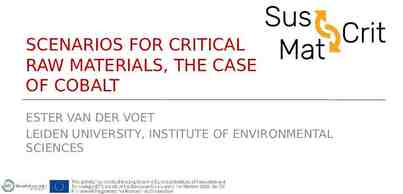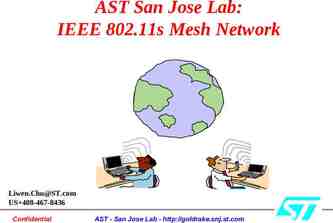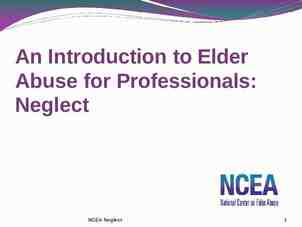To be successful today… 1)Set up Cornell Notes for Protein Synthesis
49 Slides4.61 MB

To be successful today 1)Set up Cornell Notes for Protein Synthesis 2)New Semester & Expectations 3) New Spiral Notebook (8.5 x 11 in) by TUES 1/16 BYOD Color of the day is Phones are in put away in backpacks

Essential Question: How is a protein made

G1: Normal Cell Function

Recall Where does protein synthesis occur? Where is DNA located?

RNA : Ribonucleic Acid

Turn to a Partner List all the similarities and differences with DNA and RNA

1) 2) 3) 4) 5) Singlestranded Ribose sugar Uracil replaces thymine Can leave nucleus with DNA’s instructions 3 types mRNA, rRNA, tRNA RNA

Function of RNA Carries out DNA instructions by building proteins

3 Types of RNA 1. Messenger RNA (mRNA) Carry copies of instructions for building a protein from nucleus to ribosome

2. Ribosomal RNA (rRNA) Structural component of ribosomes

3. Transfer RNA (tRNA) Transfers an amino acid to the ribosome to be added to the protein.

Talk to a Partner List the 3 types of RNA & their functions

Central Dogma of Biology

Protein synthesis occurs in two steps: 1. Transcription 2. Translation

Protein Synthesis in Prokaryotes Replication, transcription & translation occur in the cytoplasm at the same time

Protein Synthesis in Eukaryotes Replication, transcription & translation are separated by time and location

Transcription Process of copying a specific portion of DNA (gene), producing a complimentary strand of mRNA mRNA acts like an intermediate link between DNA in the nucleus and protein synthesis in the cytoplasm Think of mRNA as a temporary copy of DNA that is used and then destroyed

Steps of Transcription 1. RNA polymerase attaches to a promoter site, part of the DNA strand that codes for a gene, and separates that section of the DNA strand

Steps of Transcription 2. RNA polymerase uses one DNA strand as a template to assemble nucleotides into a complementary strand of mRNA. This follows the base pairing rules for DNA replication except that in RNA, uracil rather than thymine, pairs with adenine.

Talk to a Partner

Steps of Transcription continued 3. Once polymerase reaches the terminator site (end of the gene), mRNA separates from the DNA strand & leaves the nucleus. DNA strands rejoin or zip closed.

Transcription Animation

Talk to a Partner Explain the process of transcription

Translation RNA to PROTEIN

Translation into a Proteins are made by joining amino Protein acids with a peptide bond into long chains called polypeptides. Each polypeptide contains a combination of any or all of the 20 different amino acids.

The genetic code is read three letters at a time, so that each “word” of the coded message is three mRNA bases long. This 3-letter “word” is known as a codon. Each codon corresponds to a particular amino acid (the anticodon on tRNA).

Translation Animation

Steps to Translation

1. mRNA leaves the nucleus and attaches to a ribosome 2. The tRNA molecule with the correct anticodon attaches to the mRNA codon.

3.The AA is released from the tRNA. Peptide bond is formed between AA. 4.The mRNA slides through the ribosome.The next tRNA attaches to the mRNA codon. 5. This process continues until a STOP codon is reached.

Talk to a Partner Translation: RNA to

Because there are 4 different bases, there are 64 possible 3-base codons. 61 of them code for amino acids and 3 of them are “stop codons” that signal the end of the protein. There is also one codon that specifies methionine which serves as the “start” codon for protein synthesis.

Decoding codons into amino acids

Decoding codons into amino acids

DNA: TAC TGG CCT TCG ACT mRNA: AUG ACC GGA AGC UGA tRNA: UAC UGG CCU UCG ACU Amino Acids: Met-Thr-Gly-Ser

Talk to a partner Which amino acids do the following mRNA codons code for? UCU UCC UCA UCG AGU AGC This is known as redundancy in the genetic code .

Proteins Code for Traits The properties of proteins are determined by the number, order, and arrangement of amino acids joined together. Proteins provide the shape, structure, and pigment within your cells that you see as your physical traits Each mRNA codes for a different protein & different proteins mean different traits

Proteins Code for Traits

To sum it all up:

mRNA requires EDITING before use Pre-mRNA transcribed in nucleus – not all bases will be translated into a protein Exons – DNA bases that are transcribed into mRNA and eventually code for amino acids in proteins ( expressed genes) Introns – DNA basesthat are found btwn exons & are not translated into a protein ( interrupted genes)

mRNA EDITING Image by Riedell

RNA editing continued Exons are spliced together by enzymes to create mature mRNA that will become a protein Animation – no sound google chrome http://ww w.dnalc.o rg/resourc

Cornell Summary

Protein Synthesis

How does RNA POLYMERASE know where a gene starts and stops? Enzyme binds to places with specific DNA sequences called PROMOTERS . RNA POLYMERASE PROMOTERS tell where to start. Signals at the end of the gene code cause transcription to stop . http://images2.clinicaltools.com/images/gene/dna versus rna reversed.jpg










